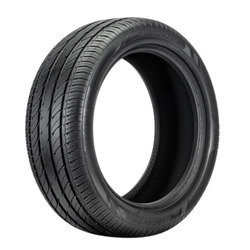

**How to Recognize a Flood-Damaged Vehicle and the Importance of Steering Clear of One**
Acquiring a pre-owned vehicle can be an astute financial choice, yet it carries certain risks—particularly if the automobile has suffered flood damage. Cars affected by flooding may appear to be in good condition externally but could conceal critical mechanical, electrical, and safety problems that aren’t immediately visible. Knowing how to recognize a flood-damaged car and why it’s vital to avoid buying one can protect you from expensive repairs and possible safety risks.
—
### Reasons to Avoid Flood-Damaged Vehicles
Flood-damaged cars are those that have been partially or completely immersed in water, typically as a result of hurricanes, substantial rainfall, or overflowing rivers. Even if a vehicle has undergone cosmetic cleaning and restoration, water exposure may lead to lasting harm to the engine, transmission, electrical systems, and interior parts.
Here are several reasons to avoid flood-damaged vehicles:
1. **Failures in Electrical Systems**: Water exposure can cause corrosion of wiring and connectors, resulting in sporadic or total failure of essential systems like airbags, brakes, and power steering.
2. **Damage to Engine and Transmission**: Water inside the engine or transmission can induce rust, corrosion, and eventual breakdown, often without immediate indicators.
3. **Mold and Mildew Issues**: Dampness trapped in carpets, upholstery, and insulation can result in mold proliferation, which can lead to unpleasant smells and health complications.
4. **Reduced Resale Value**: Cars that have suffered flood damage tend to have significantly diminished resale value and might be challenging to resell later on.
5. **Complications with Insurance and Warranties**: Numerous insurance providers refuse to insure flood-damaged cars, and manufacturer warranties are frequently voided once a vehicle is classified as flood-damaged.
—
### Steps to Identify a Flood-Damaged Vehicle
Though some sellers may disclose flood damage, others may try to conceal it. Here are essential indicators and actions you can take to identify a flood-damaged automobile:
#### 1. **Review the Vehicle History Report**
Begin by acquiring a vehicle history report from services such as Carfax or AutoCheck. These documents can disclose if the automobile has been categorized as a total loss from flooding or has been registered in flood-affected regions.
#### 2. **Look for Water Lines and Rust**
Examine the engine compartment, trunk, and beneath the dashboard for water lines. Rust or corrosion in unexpected areas—like seat tracks, door hinges, and beneath the carpet—can be warning signs.
#### 3. **Inspect the Interior for Smells**
A damp or mildew-like odor is a strong sign of water damage. Conversely, an excessively strong air freshener fragrance may mask such smells.
#### 4. **Assess the Upholstery and Carpeting**
Search for mismatched fabrics, water stains, or indications that the carpet has been swapped out recently. Lift the carpeting in the trunk or beneath the seats to check for moisture or rust.
#### 5. **Test All Electrical Features**
Flood damage can impact electrical components. Check all lights, power windows, locks, infotainment systems, and dashboard indicators. Flickering lights or malfunctioning electronics could be red flags.
#### 6. **Inspect the Engine Bay**
Look at the air filter for water marks or mud. Assess metal components and connectors for corrosion, which may suggest water exposure.
#### 7. **Have a Reliable Mechanic Examine the Vehicle**
Before committing to any pre-owned vehicle purchase, have it evaluated by a qualified mechanic. They can detect signs of flood damage that might not be noticeable to the untrained eye.
—
### What to Do If You Suspect Flood Damage
If you suspect a vehicle has flood damage:
– **Walk away from the purchase**: Regardless of how appealing the price appears, the long-term risks surpass any savings.
– **Report the seller**: If you believe a seller is consciously concealing flood damage, report them to your local consumer protection agency or the National Insurance Crime Bureau (NICB).
– **Be cautious when buying from flood-affected regions**: Following major storms or hurricanes, flood-damaged vehicles could be transferred and sold in other areas to evade detection.
—
### Final Thoughts
Flood-damaged vehicles can be ticking time bombs, harboring hidden problems that may not become evident until months post-purchase. By understanding how to identify the signs of water damage and taking measures to validate a vehicle’s history and condition, you can shield yourself from making a costly error. Always perform your due diligence and consider obtaining a professional inspection before acquiring any used car—especially if the offer appears too favorable to be true.






